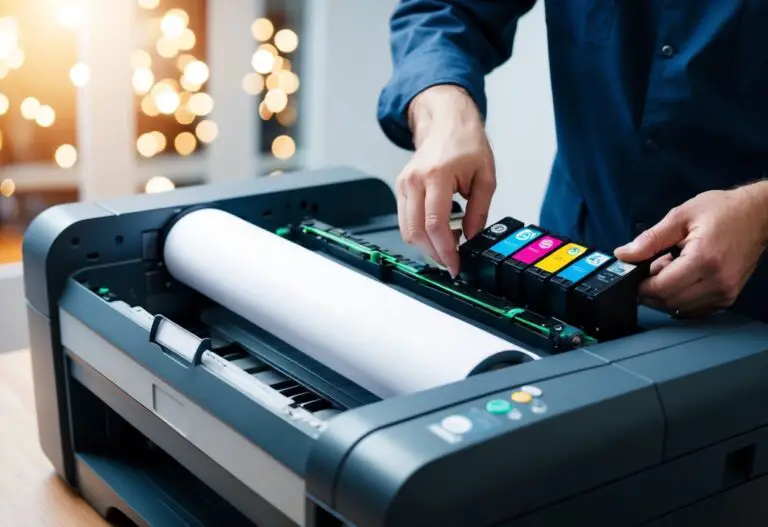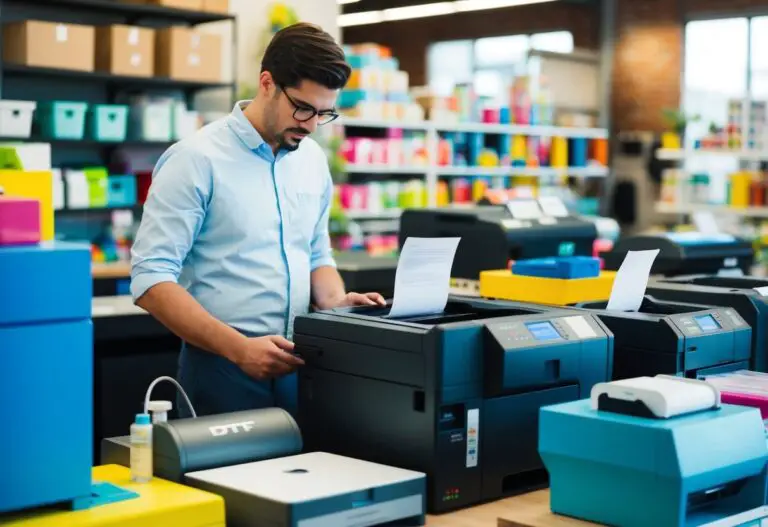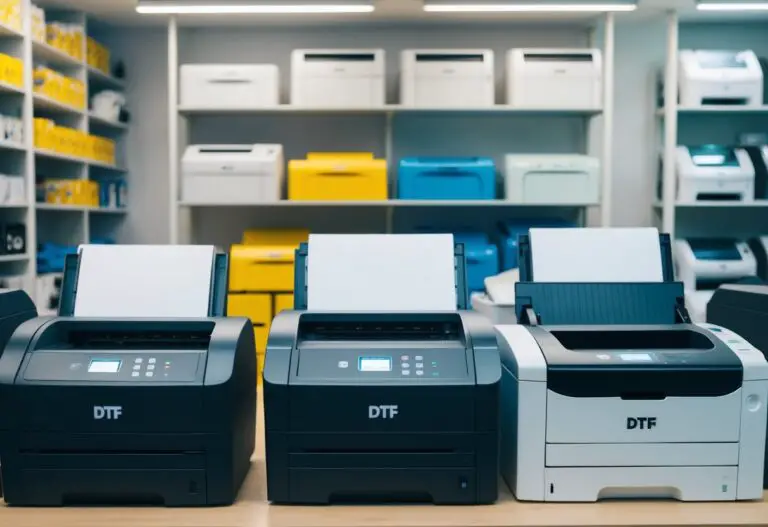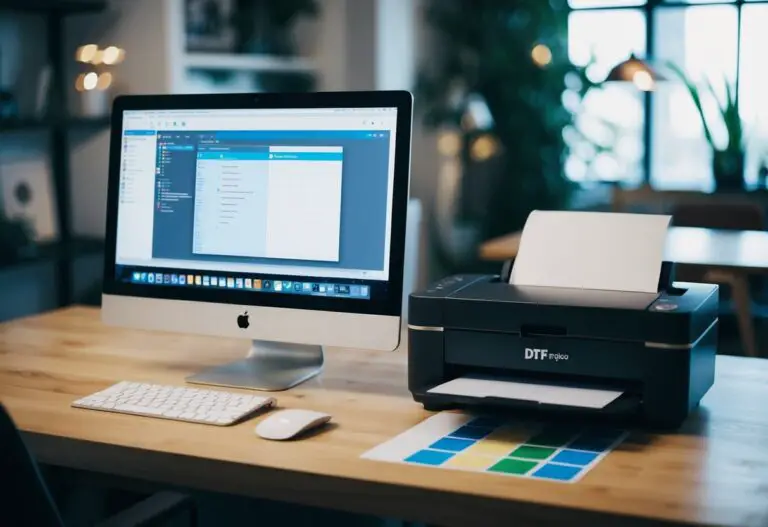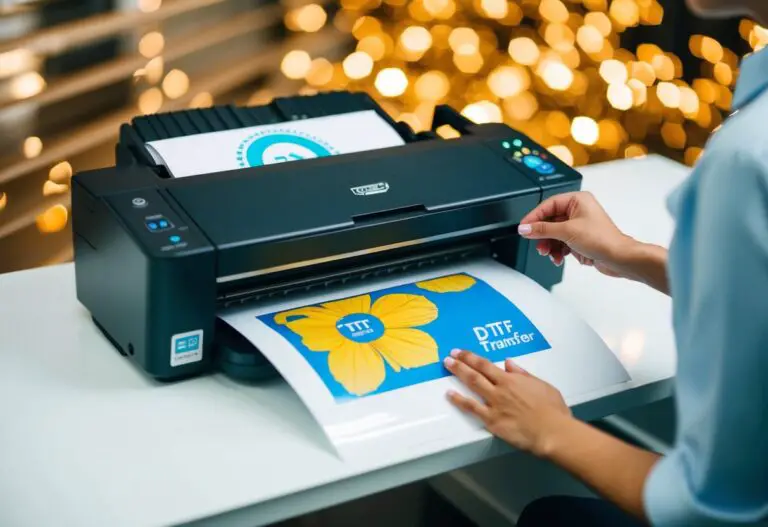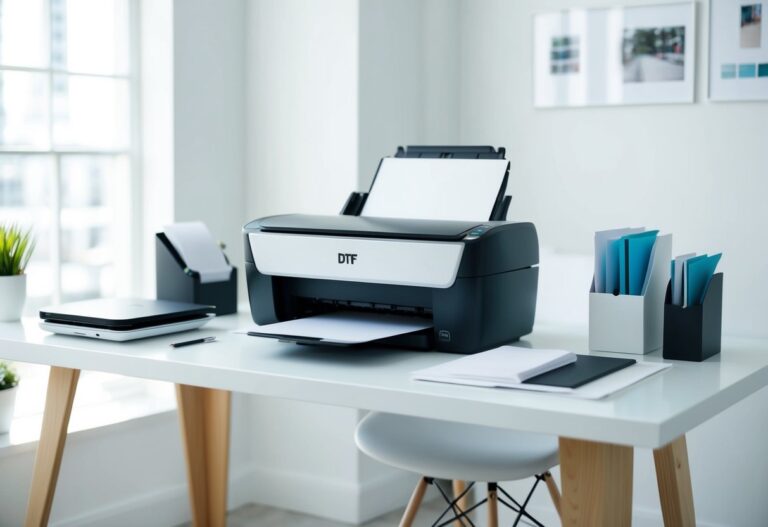DTF printing has become a popular method for creating custom designs on fabrics. You might wonder if you can use your regular printer for this exciting technique. Let’s explore the world of DTF printing and find out if your home printer is up to the task.
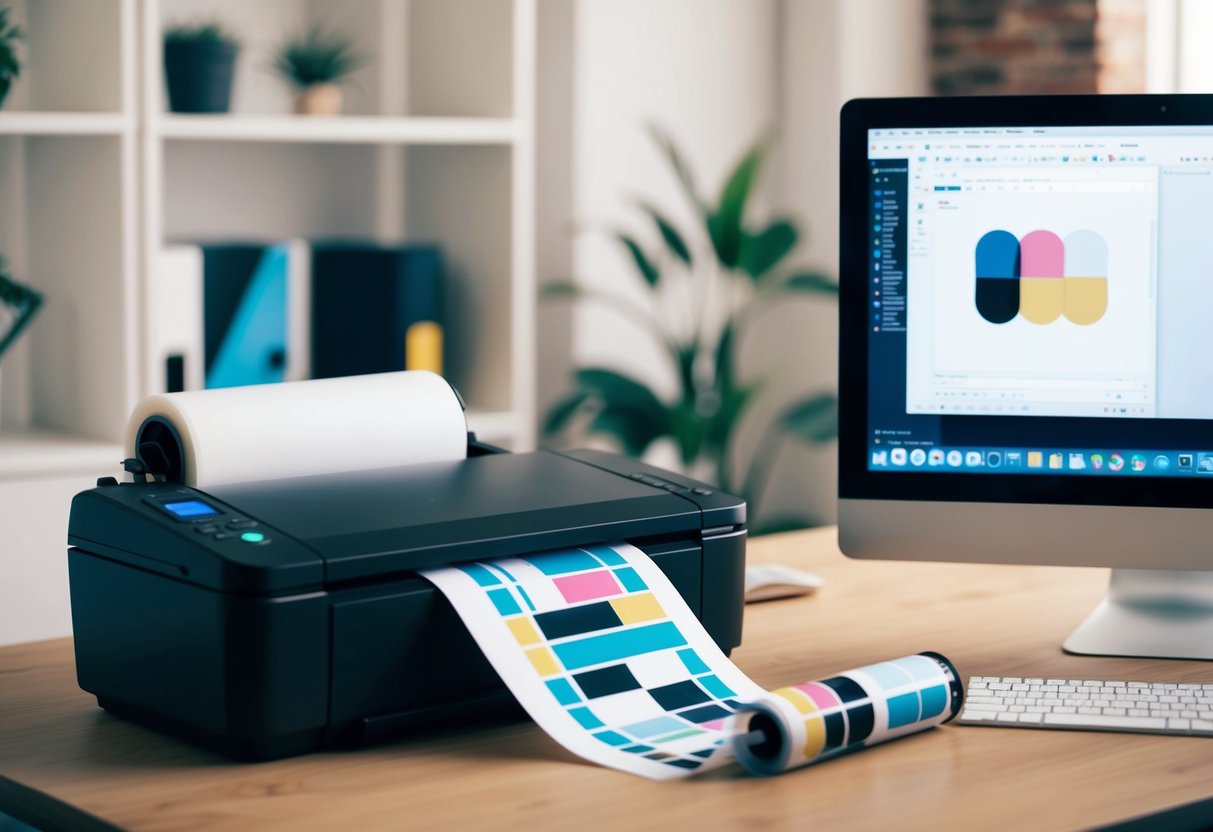
Regular printers are not suitable for DTF printing. DTF requires special equipment and inks designed for fabric transfers. Your home inkjet or laser printer isn’t made to handle the unique demands of this process. But don’t worry! There are other ways to get into DTF printing without breaking the bank.
Some people try to convert regular printers for DTF use. While it’s possible, it’s tricky and can damage your printer. It’s best to invest in a proper DTF printer if you want to try this method. These printers are made to work with special inks and transfer films, giving you better results on your fabric designs.
Key Takeaways
- DTF printing needs special printers and inks for good results
- Converting regular printers for DTF is risky and not recommended
- Proper DTF printers give the best quality for fabric designs
Can You Use a Regular Printer for DTF?
You might be wondering if your trusty home printer can handle DTF printing. Unfortunately, the answer is no. Regular printers aren’t built for this special type of printing.
DTF printing needs some fancy features that your everyday printer doesn’t have. It requires special inks, including white ink, which regular printers don’t use.
The film used in DTF printing is also different from normal paper. Your regular printer isn’t made to handle this type of material.
DTF printers have super precise print heads. They can put ink exactly where it needs to go on the film. Your home printer isn’t that exact.
If you try to use a regular printer for DTF, you’ll likely end up with poor results. The prints might smudge or not transfer well to fabric.
For successful DTF printing, you need a printer made just for this job. These printers have all the right parts to make amazing transfers.
Don’t worry if you can’t afford a DTF printer right away. Many print shops offer this service. You can start by using their machines while you save up for your own.
Differences Between Regular Printers and DTF Printers
DTF printers are quite different from the regular printers you might have at home or in your office. Let’s look at some key differences:
Ink Types
Your regular printer uses dye or pigment inks. DTF printers use special DTF inks that include white ink. This white ink is crucial for printing on dark fabrics.
What You Can Print On
Regular printers work with paper and cardstock. DTF printers use special PET films made just for DTF printing.
Print Quality
DTF printers often have higher resolution capabilities. This means sharper, more detailed prints. They’re great for complex designs with tiny details.
Here’s a quick comparison:
| Feature | Regular Printer | DTF Printer |
|---|---|---|
| Ink | Dye or pigment | Specialized DTF inks |
| Media | Paper, cardstock | PET films |
| Resolution | Standard | High (often 1440 dpi+) |
| Software | Basic drivers | Special RIP software |
Durability
Prints from DTF printers are more durable. They can withstand washing and wear better than prints from regular printers.
Maintenance
DTF printers need more care. You’ll need to clean them often and handle the special inks carefully.
In short, while regular printers are great for everyday use, DTF printers are specially made for creating high-quality, durable transfers for fabrics.
Converting Regular Printers for DTF Use
You might wonder if you can turn your regular printer into a DTF machine. While it’s possible, it’s not always easy or ideal. Some people try to convert Epson printers, but there are challenges.
The main issues you’ll face are:
• Ink flow problems
• Print head clogging
• Uneven print quality
• No support from the printer maker
To convert a printer, you’ll need:
- DTF ink
- RIP software
- A DTF conversion kit
- A bulk ink system
Not all printers work well for this. Inkjet printers with pigment-based inks are often the best choice. But even then, it’s tricky to get good results.
Think about the costs too. Buying all the parts for conversion can add up. Sometimes, it’s cheaper to just buy a real DTF printer instead.
If you decide to try conversion, be ready for some trial and error. It takes time and patience to get things working right. And remember, your printer might not work as well for regular printing afterward.
DTF Printing Process Overview
Ready to learn about DTF printing? Let’s dive in! DTF stands for Direct to Film, and it’s a cool way to make custom designs for clothes and other items.
Here’s how it works:
- Printing: A special printer puts your design onto a clear film (called PET film).
- Powdering: Next, you sprinkle a special powder over the wet ink on the film.
- Drying: The powder and ink get heated up, which makes them stick together.
- Transfer: You place the film on your fabric and use a heat press to stick it on.
- Peeling: After it cools, you peel off the film, leaving your design on the fabric.
[Process graphic showing the 5 steps of DTF printing]
DTF printing is great because it works on lots of different fabrics. You can make vibrant prints that last a long time. The special ink and powder help your design stick well to the fabric.
You’ll need some special equipment for DTF printing:
- DTF printer
- DTF inks
- DTF powder
- PET film
- Heat press
With practice, you can make awesome DTF transfers at home!
Alternatives to DTF Printing
Looking for other ways to create custom designs on fabrics? You’ve got options! Let’s explore some popular alternatives to DTF printing.
Direct to Garment (DTG) printing is a great choice for detailed designs. It works like a big inkjet printer for clothes. You can print colorful images directly onto shirts and other fabric items.
Screen printing is perfect for big batches. It uses mesh screens and ink to transfer designs. This method is cost-effective for large orders and creates vibrant, long-lasting prints.
Heat transfer vinyl (HTV) is fun for DIY projects. You cut designs from special vinyl sheets and press them onto fabric with heat. It’s easy to use at home and great for simple designs.
Sublimation printing is amazing for all-over prints. It uses heat to transfer dye onto polyester or polymer-coated items. This method creates permanent, full-color designs that won’t fade or peel.
Each of these methods has its own strengths:
- DTG: Great for detailed, full-color designs
- Screen printing: Best for large orders
- HTV: Perfect for home crafters
- Sublimation: Ideal for all-over prints on light-colored items
Try out different methods to find what works best for your projects!
Frequently Asked Questions
Many people wonder about using different printer types for DTF printing. Let’s look at some common questions about specific printers and their suitability for this process.
Is it possible to use an Epson EcoTank printer for direct-to-film printing?
Epson EcoTank printers aren’t made for DTF printing. These printers use regular ink that won’t stick to transfer film. The Epson ET-8550 is great for photos, but it can’t handle DTF ink or film.
You’d need to change too many parts to make an EcoTank work for DTF. It’s better to get a printer made for DTF instead.
Which budget-friendly printers are best suited for a DTF conversion?
Some cheaper printers can be changed for DTF use. The Epson L1800 is one that people often try. But remember, changing a printer takes work and might not turn out well.
You’ll need to swap out ink lines and add a special system for the powder. It’s risky and could break your printer. A real DTF printer is safer and works better.
Are laser printers compatible with direct-to-film printing technology?
Laser printers don’t work for DTF printing. They use heat and toner, which isn’t right for DTF film. The film would melt in a laser printer.
DTF needs special ink that sticks to film and fabric. Laser printers can’t use this ink. You need an inkjet printer made just for DTF to get good results.
